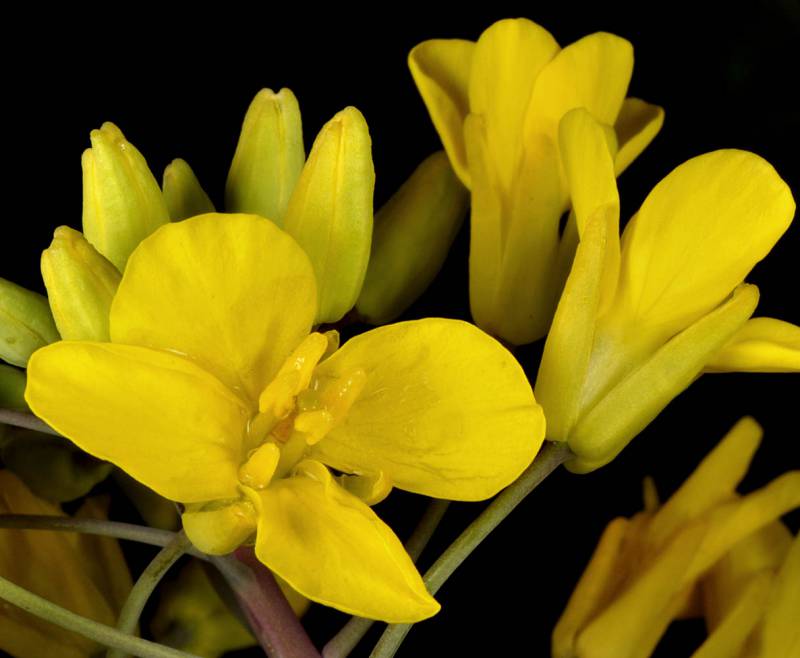Hosted by the University of Washington Herbarium, Burke Museum
Publication: Sp. Pl. 2: 666. 1753.
Origin: Introduced from Eurasia
Herbarium search: CPNWH
Notes: Known in Washington mostly from old collections in Bingen, Klickitat Co.
FNA7: "Brassica napus is both a crop and a sporadically occurring naturalized weed in North America, grown in two forms recognized by some as subspecies. Subspecies napus (rape, rapeseed, or canola) is an annual with slender roots widely cultivated as an oil crop and is the most commonly naturalized. Subspecies rapifera Metzger [= subsp. napobrassica (Linnaeus) Hanelt] (rutabaga, swede, or Swedish turnip) is a biennial with fleshy roots that rarely escapes from cultivation.
Brassica napus is an allotetraploid derived from hybridization between the B. oleracea complex (n = 9) and B. rapa (n = 10). Its center of origin is uncertain but likely Mediterranean Europe, with molecular data supporting evidence of multiple independent origins between the parental taxa B. oleracea and B. rapa and its related n = 9 species (Song K. et al. 1993). Specimens from West Virginia have not been observed."
Last updated 1/17/2022 by David Giblin.

